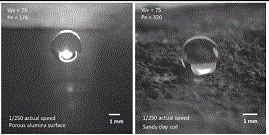Petrichor
Petrichor is the smell of rain. The word comes from the Greek words 'petra', meaning stone, and 'ichor', which in Greek mythology refers to the golden fluid that flows in the veins of the immortals.
What is Petrichor?
The phrase was coined by two researchers at the Australian CSIRO science agency in a 1964 article for the journal Nature. In their research, rocks that had been exposed to warm, dry conditions were steam distilled to reveal a yellow coloured oil that had become trapped in the rocks and soil, a substance they discovered was responsible for the smell.
The source of this oil is a combination of oils secreted by plants during dry weather (which signals to halt root growth and seed germination) and chemicals released by soil-dwelling bacteria.
How does rain create the smell?
Many people believe they can smell when it is going to rain, and there is some evidence to support this. When a higher humidity is experienced as a precursor to rain, the pores of rocks and soil become trapped with moisture forcing some of the oils to be released into the air.
But the strongest smell is released when rainfall arrives. Raindrops landing on dusty or clay soils trap tiny air bubbles on the surface which then shoot upward - as in a glass of Champagne - and burst out of the drop throwing aerosols of scent into the air where they are then distributed by wind.
Release of the scent is most prominent when light/moderate rain falls on sandy or clay soils. During heavy rain, the speed of the drops represses the creation of bubbles stopping the release of aerosols.
It is thought by some scientists that our reliance on rain in cultures throughout history may be the reason why so many people enjoy the smell of rain.
Captured by researchers at the Massachusetts Institute of Technology using high-speed cameras, the video below shows raindrops landing and the emergence of petrichor aerosols as tiny white flecks.






